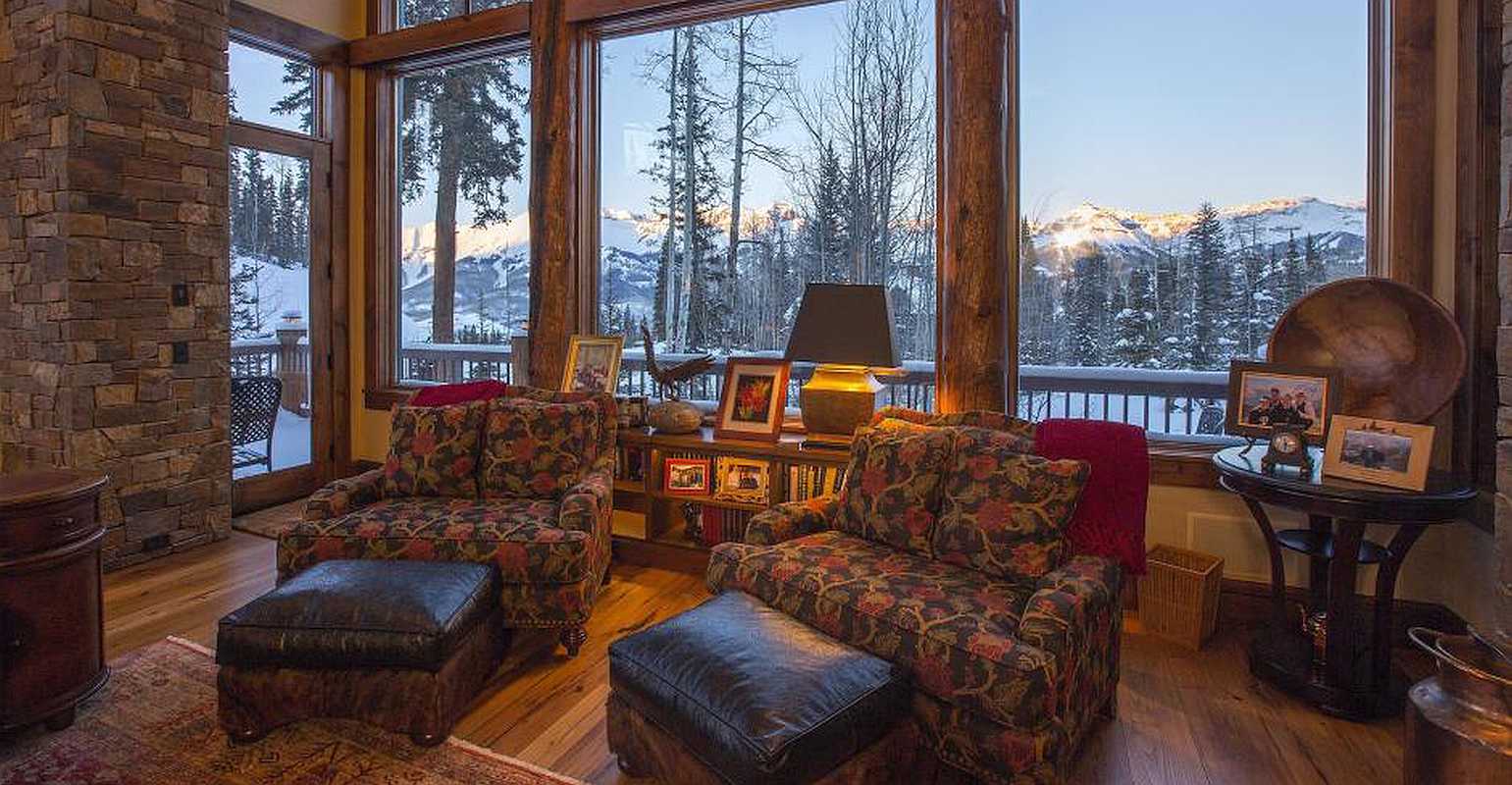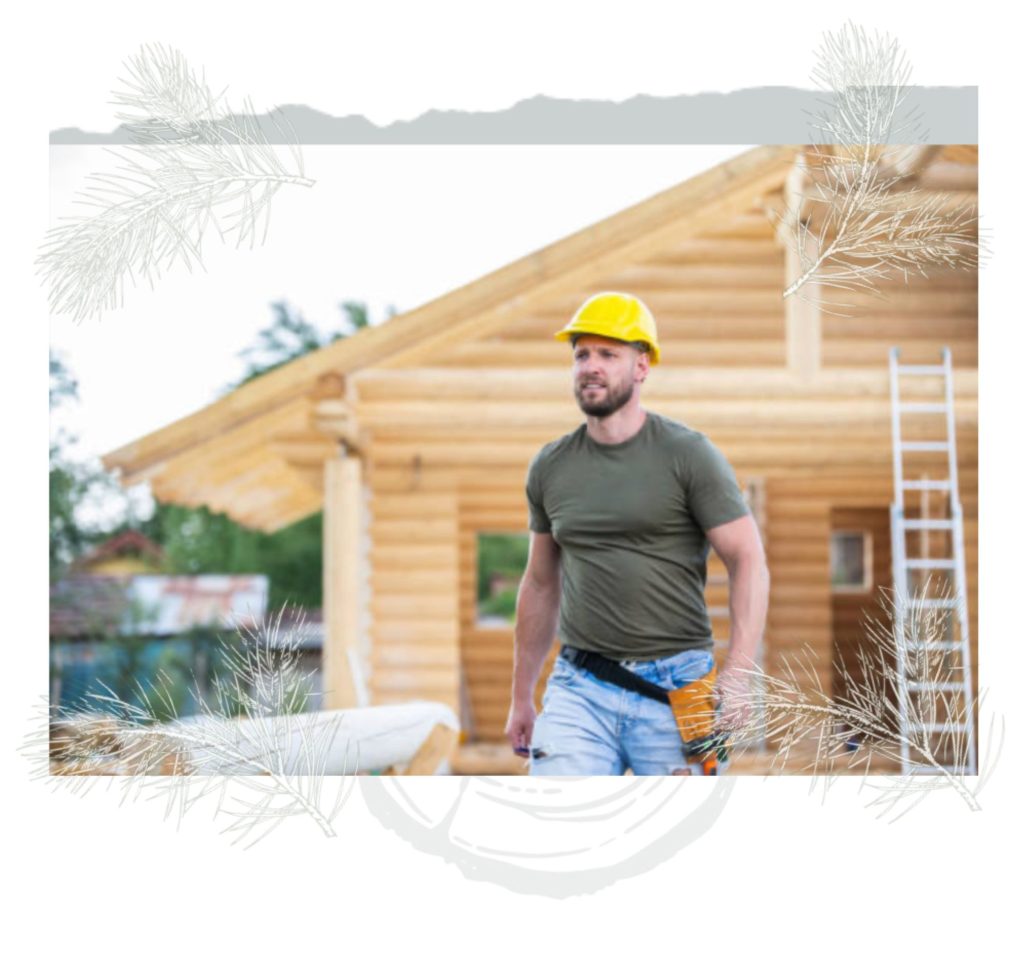Residential building codes related to energy efficiency are changing in many areas of the country – and the higher standards mean that you must be up-to-speed, or you won’t be able to build. The new codes are generally a good thing, because by building a more energy-efficient home, you’ll save money on heating and cooling bills, and increase the overall comfort of your home.
To get the most energy-efficient home, choose the most energy-efficient modern materials in the construction of your home. Learn here about the five materials we recommend, three of which you can get in the eLoghomes Platinum Energy Package, plus two others to consider.
But first, let’s talk for a moment about how to ultimately measure the energy efficiency of your home, by understanding a term called RESchecks.
WHAT IS A REScheck
A REScheck is a common building industry assessment used to determine the energy efficiency of a home’s building envelope. Before you build your home, research how strict the codes are in your area. Your contractor may need to complete a REScheck calculation to determine if your home will meet the residential energy efficiency codes in your specific part of the country. A REScheck calculation that includes all of the energy-efficient products used in the envelope of your home will prove that you meet the residential energy efficiency building code in your market. For more about RESchecks, visit this site: Energycodes/gov.
MATERIAL #1
Eight-Inch Wide Logs For Your Walls
Eight-inch logs (versus six-inch) are more energy efficient because they add more thermal mass. Why is thermal mass important? Here’s an example: during hot summer days, the logs can absorb excess heat, helping to keep the interior cooler and potentially reducing the need for air conditioning. Conversely, in the winter, the stored heat in the logs can assist in maintaining a warmer interior temperature, potentially reducing heating requirements. This can result in energy savings over time. Also, be aware of how your logs are fastened together, because certain methods create a weather-tight structure. For instance, the eLoghomes 6-point Weatherlink system includes a double tongue and groove connection, plus a double-row foam gasket, sealant, lag bolts, and dowels. These work together to offer a high level of weather tightness that exceeds any stick-built home.
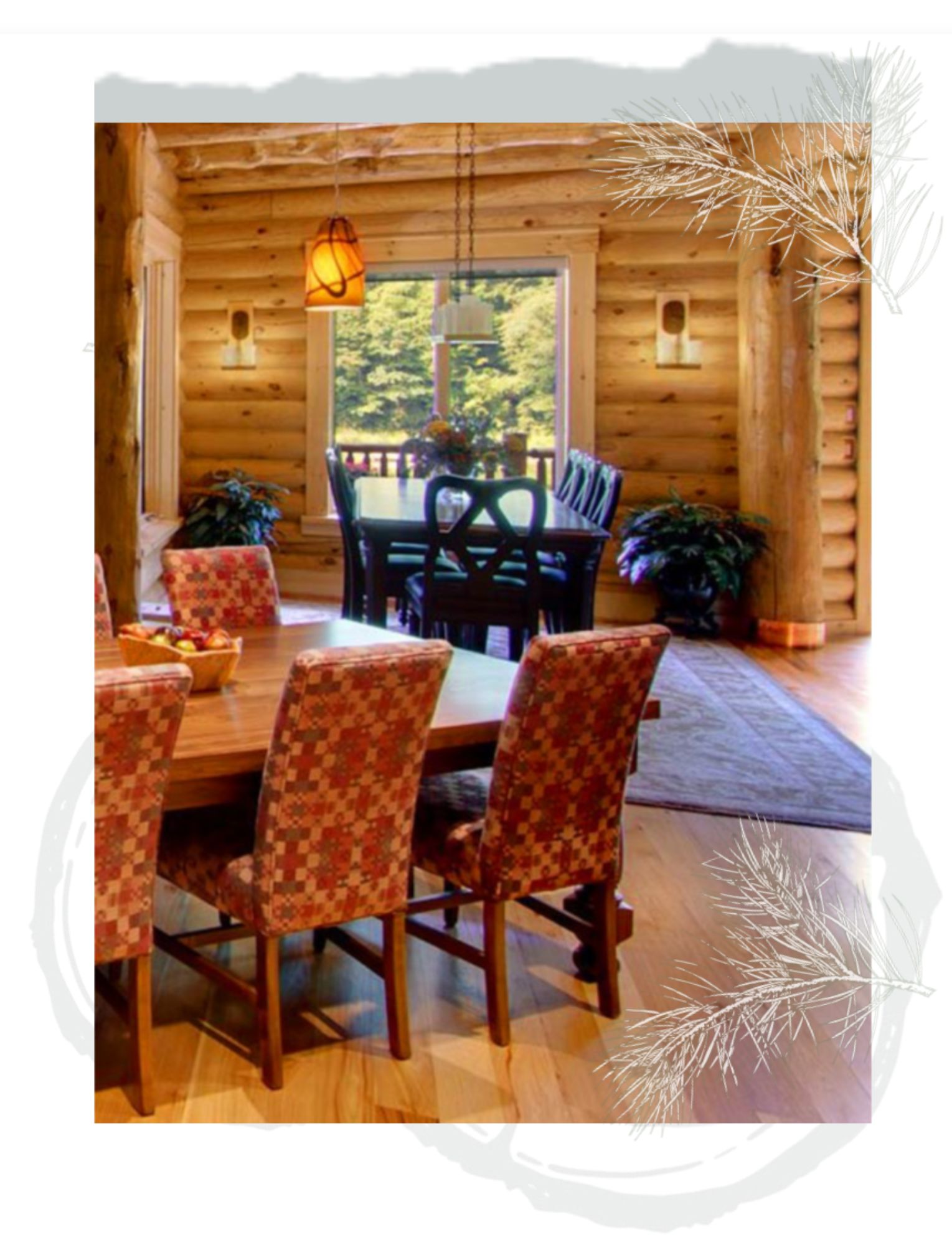
MATERIAL #2
Structural Insulated Panels (SIPs)
SIPs are formed by pressing together two sides of structural OSB around a hard core interior of EPS foam insulation. These panelized components provide tighter construction than a typical framed wall or roof, and are offered in higher levels of R-Value to meet residential energy efficiency building codes across the country. SIPs also eliminate the need for other types of insulation on exterior walls and roofing, where applied. The images here illustrate that SIPs construction blocks air infiltration better than traditional framed construction, making the home more energy-efficient.
eLoghomes is now uniquely offering SIPs as an option for second-level exterior gable and wall construction and roofing applications.
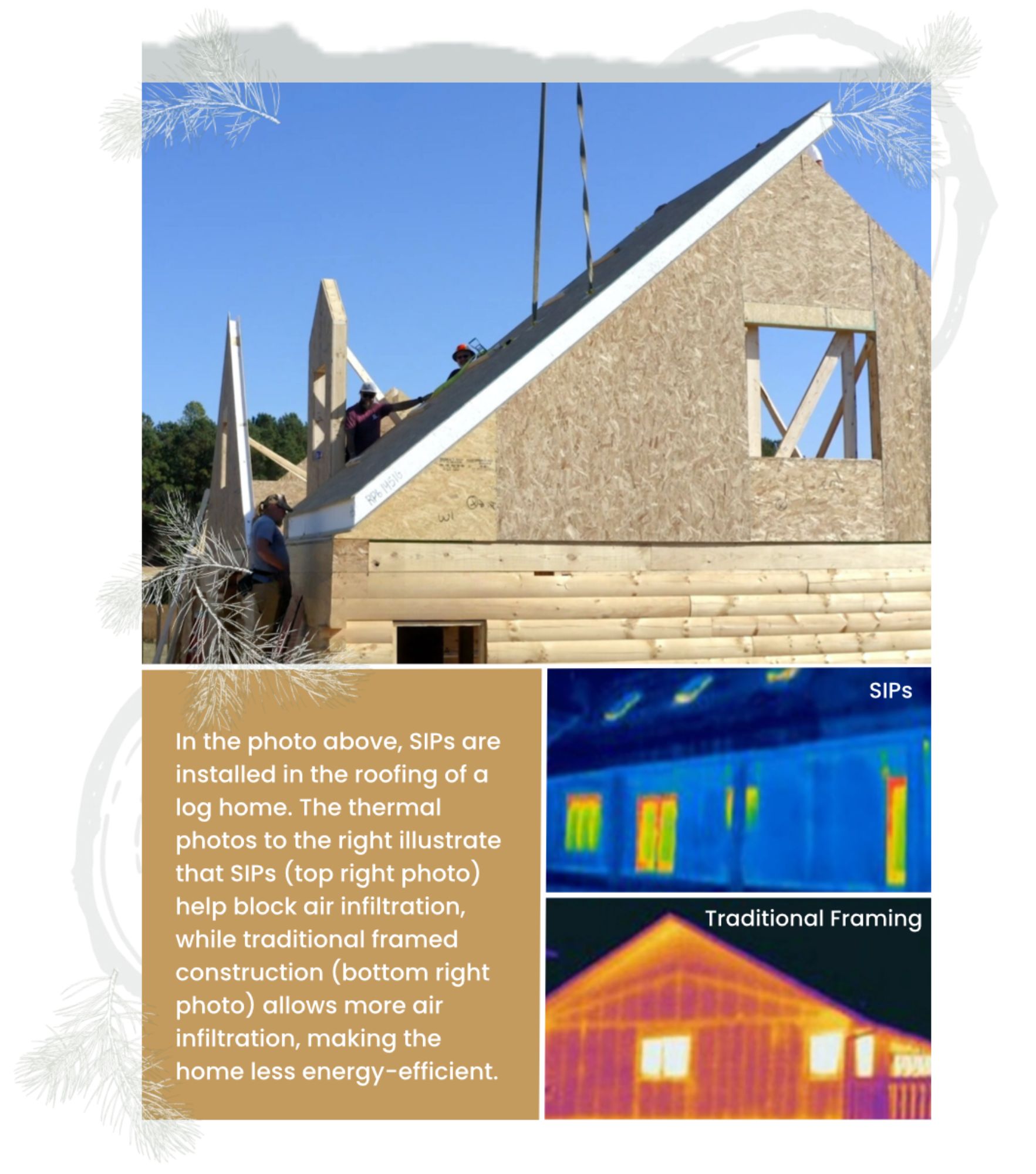
MATERIAL #3
Triple-Pane Windows
These provide enhanced insulation compared to double-pane windows, helping to maintain a more consistent indoor temperature. This results in energy cost savings, as the windows reduce heat loss during colder months and heat gain during warmer months. They also often have a low-emissivity (low-E) coating, which helps control the transfer of heat and blocks harmful UV rays, protecting your furnishings from fading. The material used in the frame by the window manufacturer can also contribute to energy efficiency.
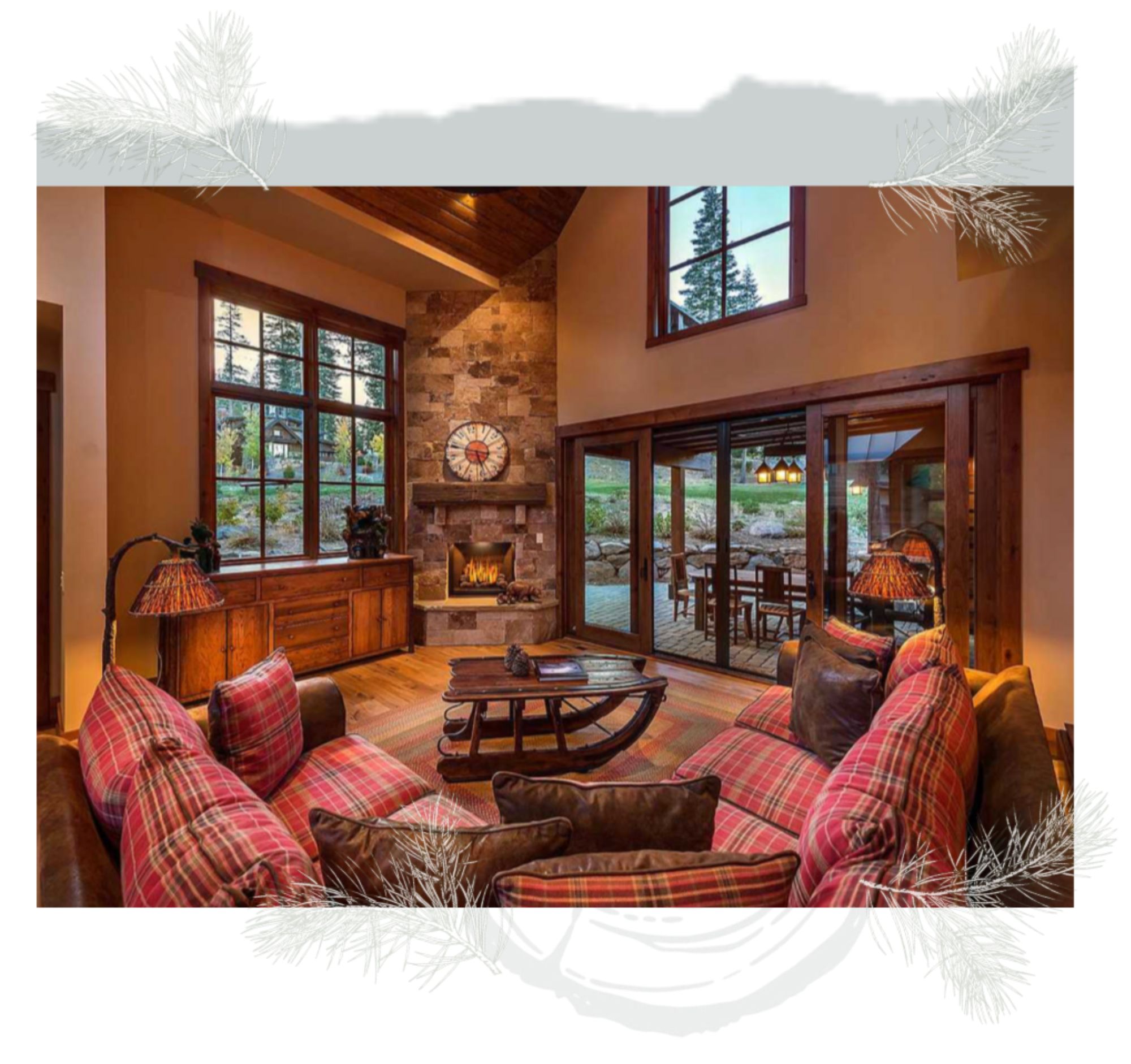
MATERIAL #4
Energy-Star Rated HVAC System
Some studies indicate that leaky ductwork can cause 40% energy waste in the heating and cooling of your home. So, opt for a system that is energy-star rated, and ask your HVAC contractor to explain how the system will be properly sealed throughout. Also, choose a system that is properly sized to your home. A system that is too large will be a waste of your money, while going too small will mean your unit will run longer, work harder, and wear out faster than it should. Also, using SIPs will likely save money on the HVAC equipment cost due to the reduction in tonnage required.
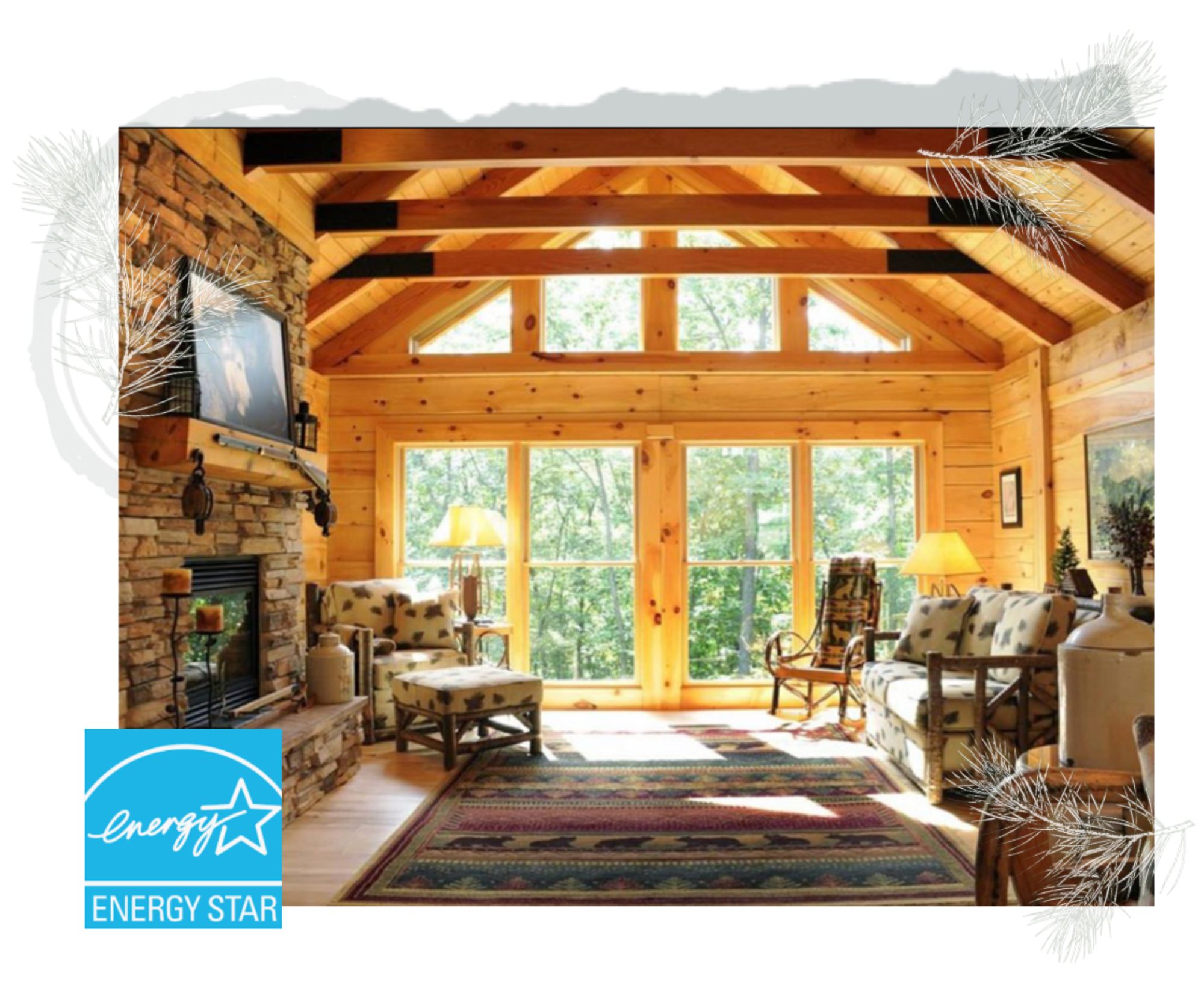
MATERIAL #5
Insulated Concrete Forms (ICFs) In Your Foundation
These are typically made of rigid foam insulation and are assembled to create a mold for poured concrete. The result is a solid, insulated, and energy-efficient foundation. ICFs consist of interlocking components that stack together like Lego blocks, forming the shape of the foundation walls. Once assembled, concrete is poured into the cavity of the forms, creating a reinforced concrete wall. The foam insulation remains in place, providing continuous insulation on both the interior and exterior sides of the foundation. In addition to improving energy efficiency, they increase structural strength, making the foundation resistant to temperature fluctuations and making your home more comfortable.
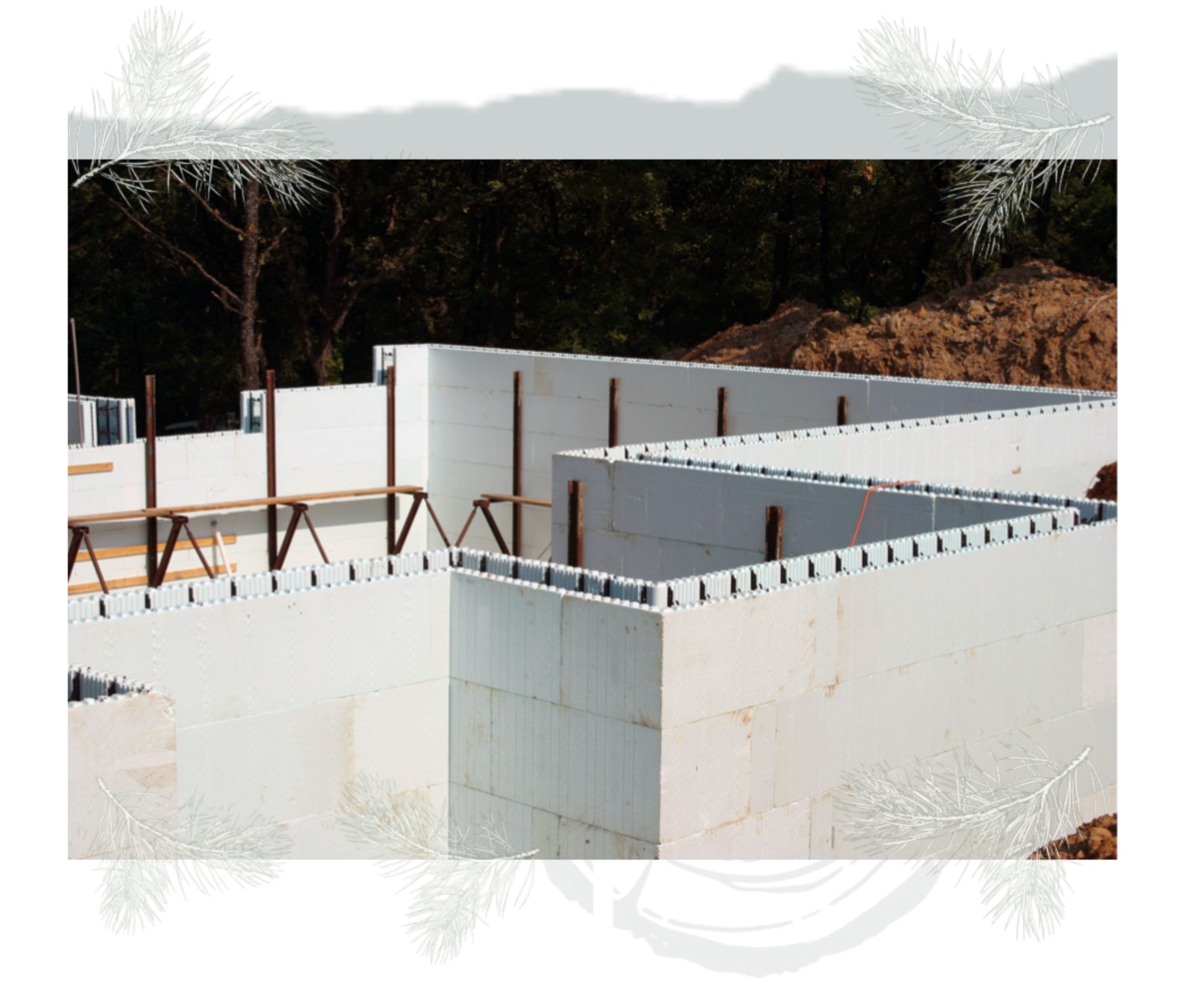
By blending traditional craftsmanship with contemporary energy solutions, your log home can offer a harmonious balance between nature and energy efficiency.

